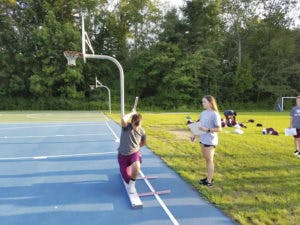Trail hiking is an excellent way to improve fitness throughout the year and New England, specifically Massachusetts, has several opportunities for day hikes, short and long. Trip planning and safety are important to having an enjoyable day.
Just a few things to consider in preparing for any hike:
- Consider the strength of your party and chose hikes that are appropriate for your physical abilities - the overall distance, amount of climbing and roughness of the terrain.
- Get a weather report and pay attention to the weather throughout the day - weather is different in the lowlands compared to higher up - prepare for the worst possible conditions and be prepared to change itinerary if necessary.
- Plan to start your hike as early in the day as possible - be aware of sunrise and sunset - always let someone know your route and when you expect to be back, especially for longer hikes.
- Consider the season and have appropriate clothing and supplies - keep in mind that trails in spring may have ice or mud, autumn trails may be covered with slippery leaves that can also hide rocks or roots. Winter hiking, with hazards of snow and cold, requires additional preparation and novice hikers should always be accompanied by more experienced trekkers.
- Be prepared to know what to do if you encounter backcountry hazards - your cell phone may not be functional in the woods, so always know your location. A great resource for hiking is the Massachusetts Trail Guide, Appalachian Mountain Club's Comprehensive Guide to Hiking Trails in Massachusetts, available for purchase at REI or Easter Mountain Sports, or check out availability at your local library. REI and EMS often run local workshops on hiking safety, so check out the websites: REI.com and emsoutdoors.com.
- Adequate equipment varies according to the length of the hike, weather and terrain. For most hikes, hiking boots are preferred as they provide better traction and ankle support. Good things to consider having in your back pack for a day hike include guidebook/maps, water bottle, compass, pocketknife, rain gear, wind breaker, wool pullover, waterproof matches, enough food, first aid supplies, whistle, sunscreen, sunglasses, insect repellent, safety pins, trash bag, toilet paper/tissue, flashlight or headlamp with extra batteries/spare bulb.
- Know your route, stay on the trail and be prepared for what to do if you get lost. Multiple hikers in a group should stay in sight of one another, careful not to allow someone in your group to get too far ahead or lag too far behind.
Enjoying the beautiful outdoors and staying fit can enhance our quality of life. New England has so many beautiful places to see, many resources are available through the Appalachian Mountain Club, The Sierra Club, the Trustees of Reservations and your local town trails committee. So, take a hike, have fun and stay safe.




